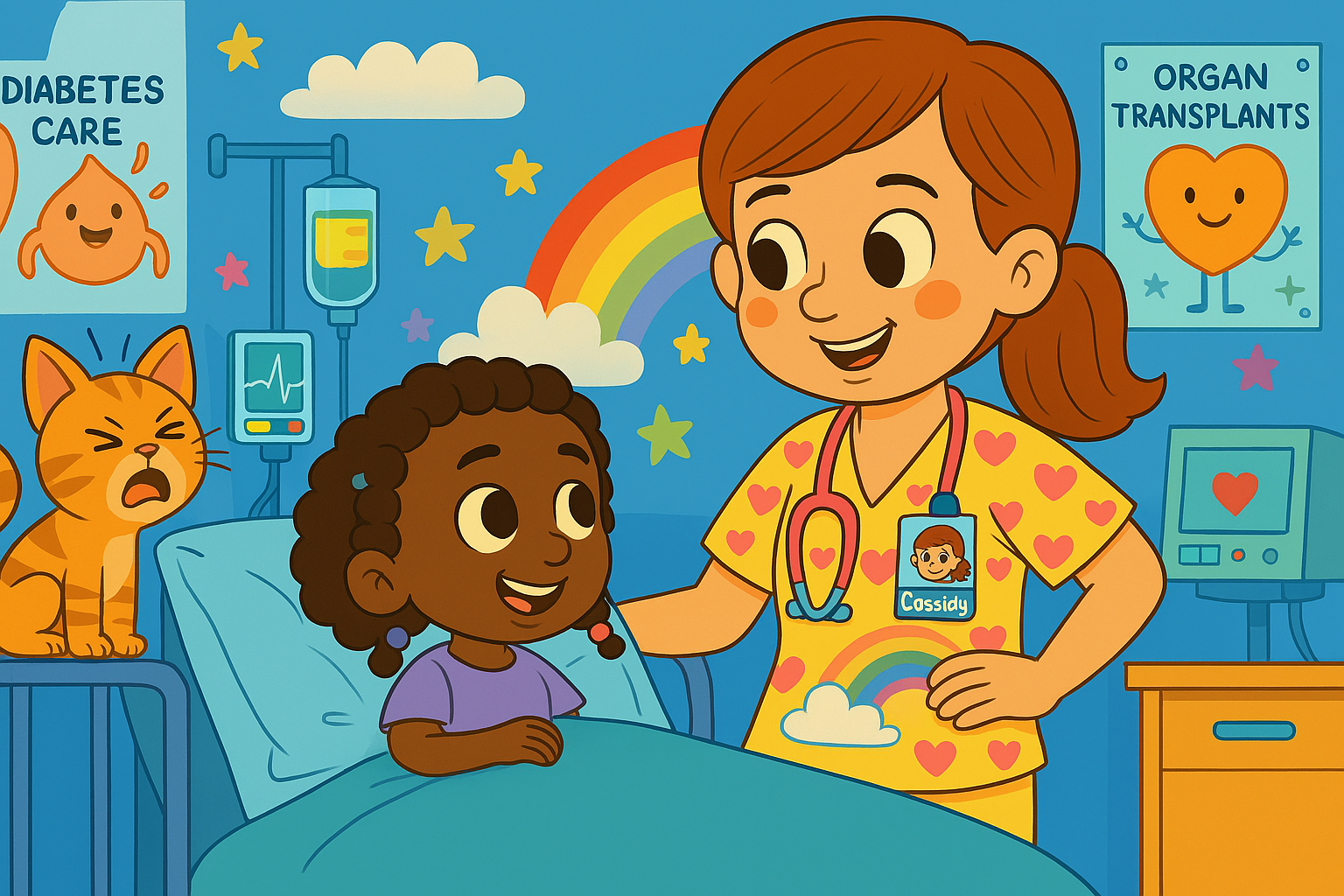Dancing For Diabetes
I'm proud to introduce Dancing for Diabetes as the newest sponsor of the Juicebox Podcast and I am absolutely thrilled to have the opportunity to tell you about this amazing diabetes charity.
Dancing for Diabetes has been spreading awareness through the art of dance to better educate the community, raise funds to find a cure, and inspire those with diabetes to live healthy and active lives for the past 18 years and will continue to do so until a cure is found!
Diagnosed with type 1 diabetes at 10 years old in 1999, Elizabeth Forrest was determined to not let diabetes negatively impact her life. As a direct result, Elizabeth created nonprofit organization, “Dancing for Diabetes.”
As a student in a middle school dance program in Sanford, Florida, Elizabeth was inspired to host a show to raise funds but more importantly, spread awareness. What started as a small neighborhood event quickly transformed into a large annual production and then further into a year round 501c3 nonprofit organization. In the fall of 2018, Dancing for Diabetes will produce its 18th annual show.
Year round, Dancing for Diabetes provides free dance class for kids and teens with type 1 diabetes, hosts several outreach events and programs for kids, teens and adults, and produces Touched by Type 1 – an educational and empowering conference in Orlando, Florida. To learn more, please visit: www.dancing4diabetes.com.
"No good. Diabetes." - Donald Trump
Have diabetes? Trump thinks that makes you unable to perform your job.
This blog post will be quoting a reporter from Jonathan Swan at Axios.com. Jonathan is citing sources who say that Donald Trump believes he'll be replacing four supreme court justices during his term.
"Asked how he comes to that jaw-dropping number, Trump mentions the obvious: he's already replaced Antonin Scalia with Neil Gorsuch, and there are rumors Anthony Kennedy will retire."
"Ok," one source told Trump, "so that's two. Who are the others?"
"Ginsburg," Trump replied. "What does she weigh? 60 pounds?"
"Who's the fourth?" the source asked.
"Sotomayor," Trump said, referring to the relatively recently-appointed Obama justice, whose name is rarely, if ever, mentioned in speculation about the next justice to be replaced.
Trump explained...
"Her health, No good. Diabetes."
In ten years of writing about type 1 diabetes I've perhaps posted twice about something even remotely political. But today it is being reported that the President of the United States believes that type 1 diabetes is an impediment to acting as a Supreme Court Justice. I would like to know what further bias Trump holds against people living with chronic illness. If Justice Sotomayor can lose her job for having type 1, can you? Maybe she doesn't deserve healthcare? Why is it so easy for Trump to dismiss a human being because they happen to have type 1 diabetes? Why is the person making decisions about how the country receives healthcare so painfully unaware of what it means to live with type 1 diabetes.
Please consider sharing this image on your social media channels and ask news agencies to look deeper into the Axios story. Use the hashtag #RespectUs
Little Girls are like Snowflakes
Little girls are like snowflakes, no two are exactly the same...
Snow day! It is snowing here as I write this post which is strange because it was sixty-five degrees yesterday afternoon when Arden came home from school and asked me this question.
"Can I have a sleepover tonight if school gets cancelled tomorrow because of snow?".
I thought for a moment and decided that if Arden had friends overnight then they would stay up late and if they stayed up late... then they would sleep in. I immediately imagined a morning to myself, smiled and said "sure!".
The sleepover brought one surprise that I hadn't pre-planned for, I needed more food at dinner time then I had in the house and so we ordered out. When the pizza, fries and some other stuff arrived at the door we bolused, set an increased temp basal and Arden ate. About an hour later her BG began to slowly drift up. I had been noticing all day that her BG wasn't responding to boluses the way I expected and began considering if we needed a new pump site. An hour later after I wasn't getting the movement that I wanted (her BG was 160) Arden changed her pump.
I was aggressive with the insulin after the site change because of the new infusion, pizza in her belly and the excitement of a sleepover. Still around midnight her BG was still stuck at 150. When I went into Arden's room the three girls were passed out on an inflatable mattress that they set up next to Arden's bed. So it was air mattress on the far side of the room, then Arden's bed, then me. I was farthest from the air mattress because of where Arden's Omnipod PDM was located. I clicked a few buttons sent a bolus to her pod (it has great range) and went back to bed.
Not ten minutes later I decided that I should have also used an increased temp basal rate and so I snuck back in to the room. It was dark but I could see that Arden had made her way from the air mattress and was now sleeping in her bed. I crouched down next to her and held the wireless PDM close to her abdomen where she had recently put her new pod. The PDM couldn't connect. I tried again, wouldn't connect. I jammed the PDM between Arden and the mattress... nothing. As I began to worry that the new pod might not be working correctly Arden jumped up in the darkness, I had scared her. This felt wrong as she has never responded in the middle of the night like that. As I was about to ask if she was okay a voice said, "Sorry you scared me... Mr. B... I'm not Arden".
So it turns out that Nadia, Arden's friend was the one who moved from the air mattress to Arden's bed and the reason I couldn't connect to Arden's pod? It was across the room and Nadia's body was absorbing the signal.
We don't get too many middle of the night insulin related laughs around here and I imagine that you don't either so I wanted to share. I have to remember to tell this story on the podcast sometime. I felt like an idiot.
Individuals with Disabilities Education Act (IDEA)
Today, I am begrudgingly breaking a long standing rule on this blog of not talking about politics...
Betsy DeVos
Yesterday a new Education Secretary, Betsy DeVos, was confirmed by the Senate. DeVos a wealthy Republican donor who never attended a public school, is not an educator and has spent most of her life promoting charter schools and vouchers is now in charge of almost 100,000 public schools.
Today the government website for the Individuals with Disabilities Education Act is not responding...
I'm going to go out on a limb and say if it looks like a duck and quacks like a duck, you better start calling your Senators and Congresspeople.
About IDEA from the ADA website
What is IDEA?
The Individuals with Disabilities Education Act (IDEA) is a federal law that requires states to provide a "free, appropriate public education" to children with disabilities so they can be educated to the greatest extent possible along with all other children. Qualifying children are entitled to special education and related services at no cost to their parents/guardians.
Who is covered?
To receive services under IDEA, a child with with a disability must show that he or she needs special education and related services in order to benefit from education. An evaluation of the child must show that, because of the child's disability, the child's educational performance is harmed. There are three situations in which a child with diabetes might be covered under IDEA:
1. The child has another disability which impacts his or her ability to learn, but diabetes itself does not cause an impact in learning. For example, a child with Down syndrome might have an impact in learning.
2. Both diabetes and another disability combined impact the child's ability to learn. For example, it might be determined that a child's ability to learn is impacted by both autism and diabetes.
3. The child's diabetes, by itself, causes an impact on learning. This is categorized as an "other health impairment" under the IDEA.
While it is most common for a child with diabetes to qualify for IDEA because of having another disability in addition to diabetes, it is also possible that diabetes itself can cause an impact in learning. For example, it is often difficult to learn when blood sugar levels are either too high or too low. If a child with diabetes is having difficulty managing his or her blood sugar level, this may hurt how well the child does in school. Academic progress might also suffer if a child with diabetes misses a significant amount of classroom instruction each day in order to attend to diabetes care tasks.
The Center for Parent Information and Resources describes "Other Health Impairments" like this.
“Other Health Impairment” is one of the 14 categories of disability listed in our nation’s special education law, the Individuals with Disabilities Education Act (IDEA). Under IDEA, a child who has an “other health impairment” is very likely to be eligible for special services to help the child address his or her educational, developmental, and functional needs resulting from the disability.
(i) Is due to chronic or acute health problems such as asthma, attention deficit disorder or attention deficit hyperactivity disorder, diabetes, epilepsy, a heart condition, hemophilia, lead poisoning, leukemia, nephritis, rheumatic fever, sickle cell anemia, and Tourette syndrome; and
You can read the rest on their website here.
update 9:54am - Dept of Ed says this is not purposeful.
News: U.K. Airline Pilots Fit to Fly With Type 1 Diabetes
from MedPage - Ed Susman, Contributing Writer, MedPage Today
MUNICH – Commercial airline pilots flying withinsulin-controlled diabetes had no incidents of medical incapacitation in more than 18 months of study, researchers reported here.
Of the 26 insulin-treated pilots flying planes under the U.K. flag, a total of 8,897 blood glucose monitoring values had been recorded during 4,900 flight hours with more than 96% of the cockpit glucose monitoring readings indicating pilots with diabetes were in the "Green Zone" for safety, reported Julia Hine, MD, of the Royal Surrey County Hospital in Guildford, England.
In a presentation at the European Association for the Study of Diabetes, Hine said that for short and medium haul flights -- those of less than 6 hours duration -- 96% of 7,829 blood glucose monitoring readings were within the safe range. For long haul flights, 97% of 1,068 readings were within that "green" range.
The entire article is avail able here.

























